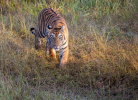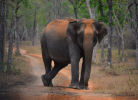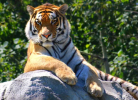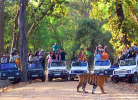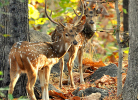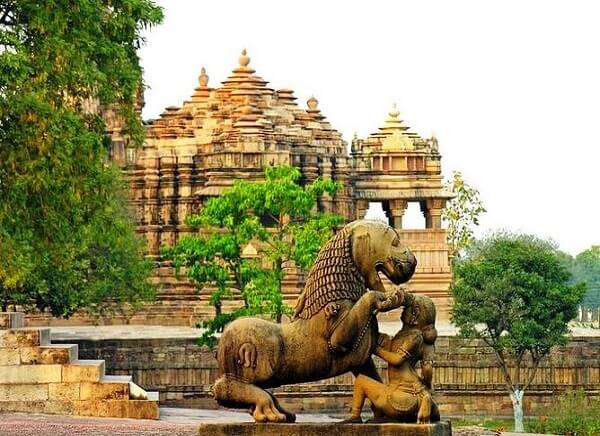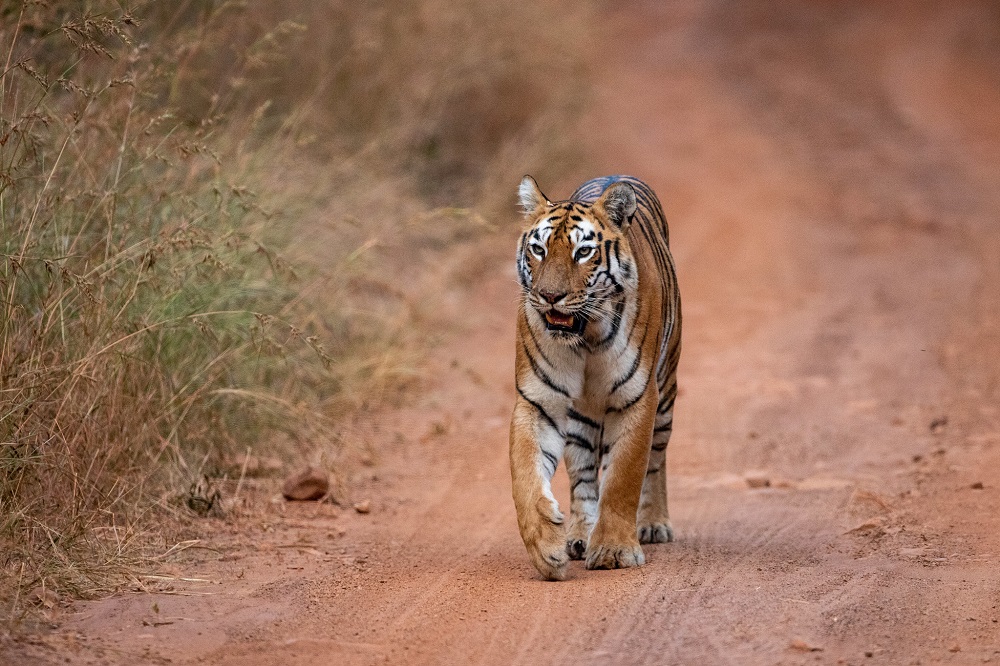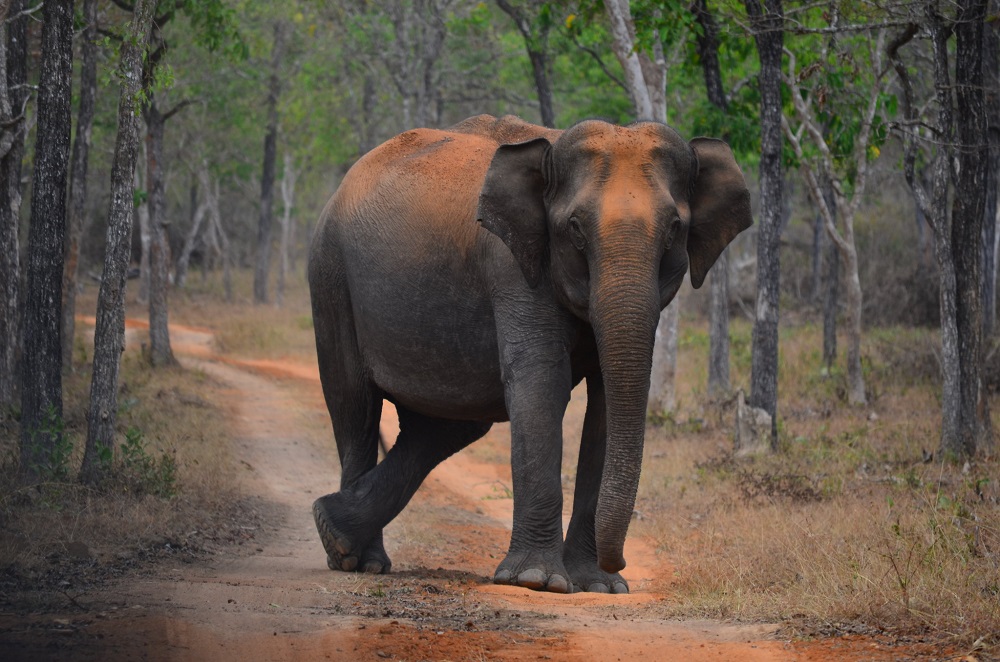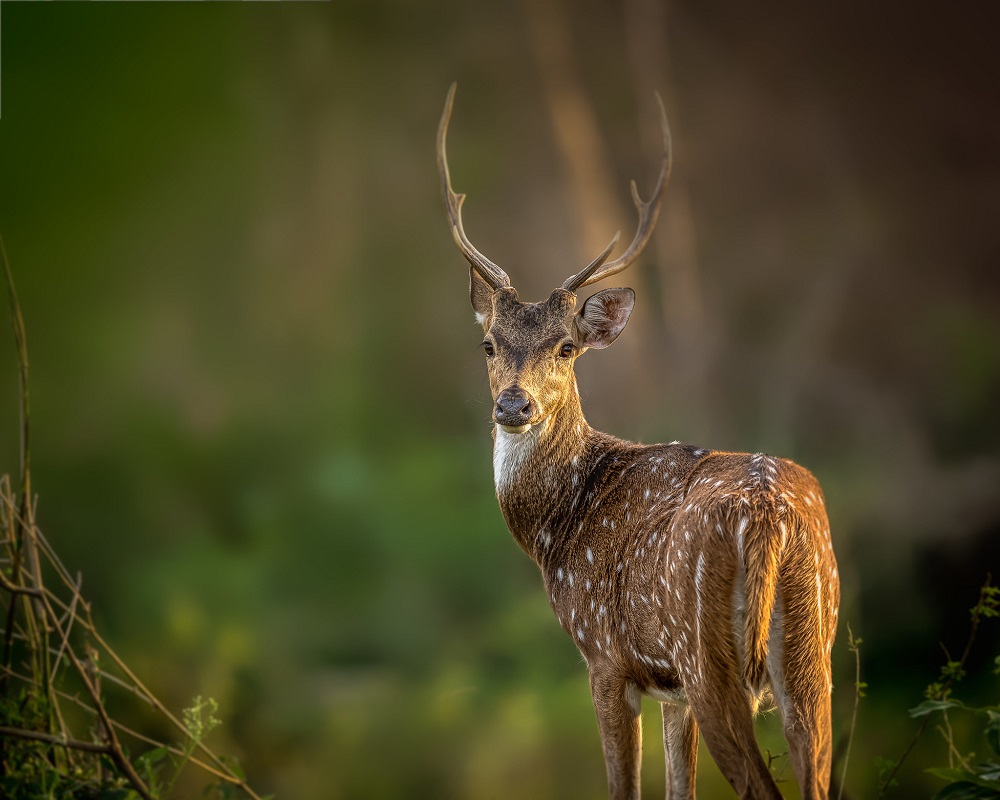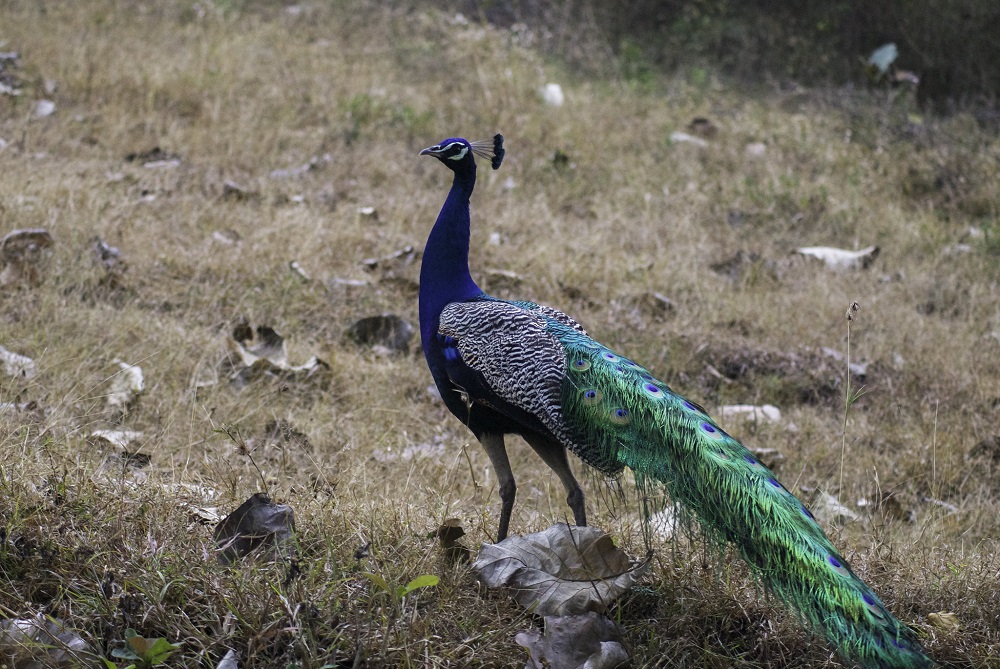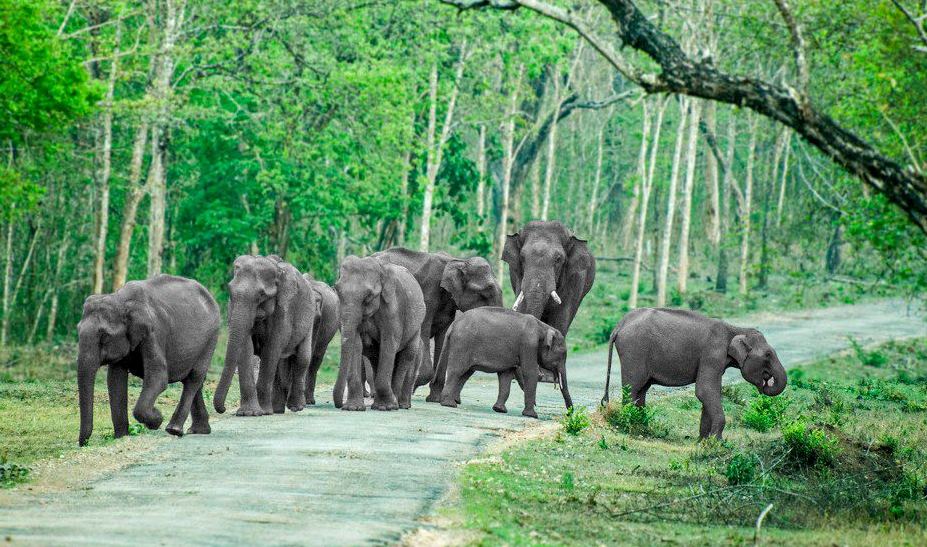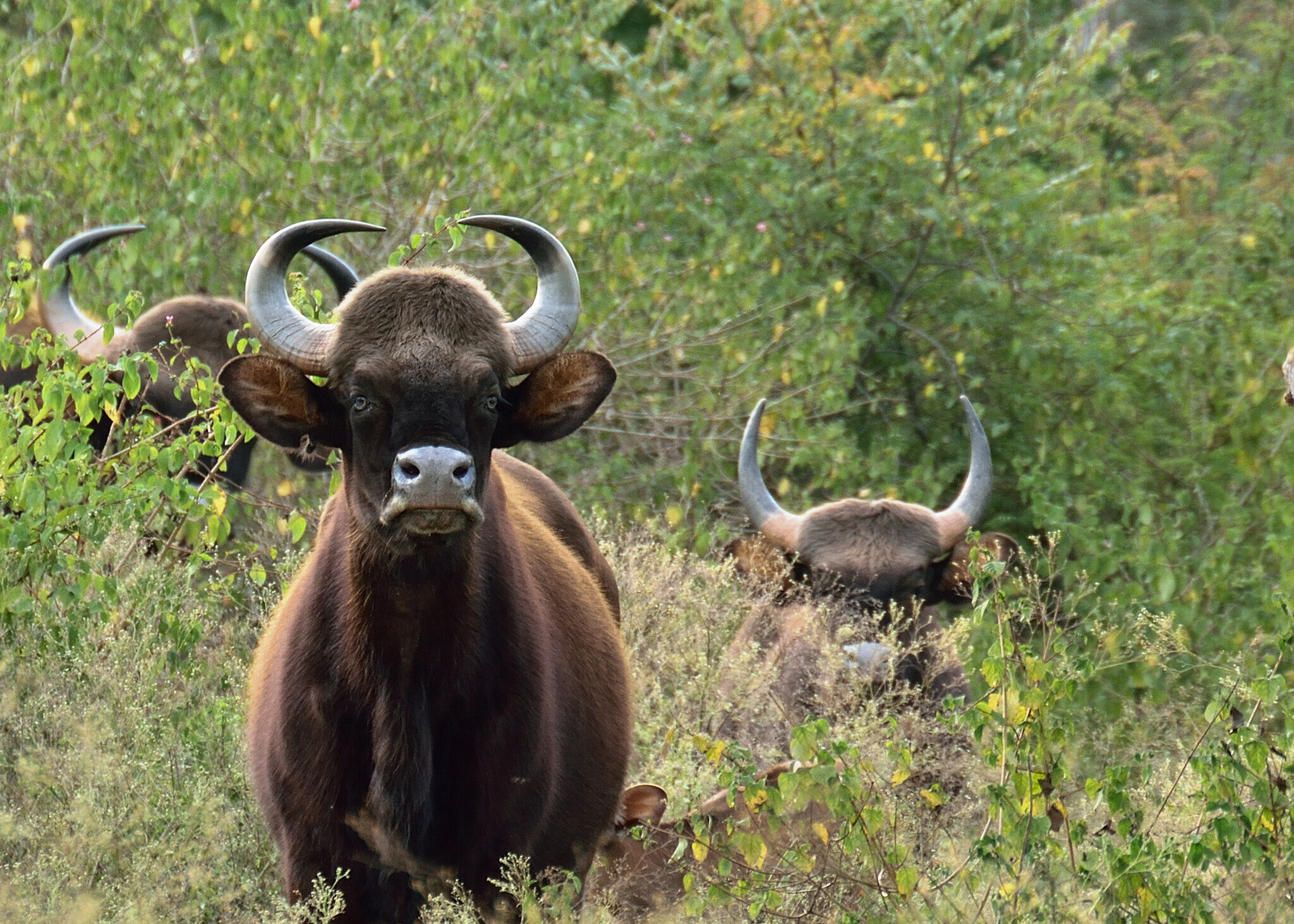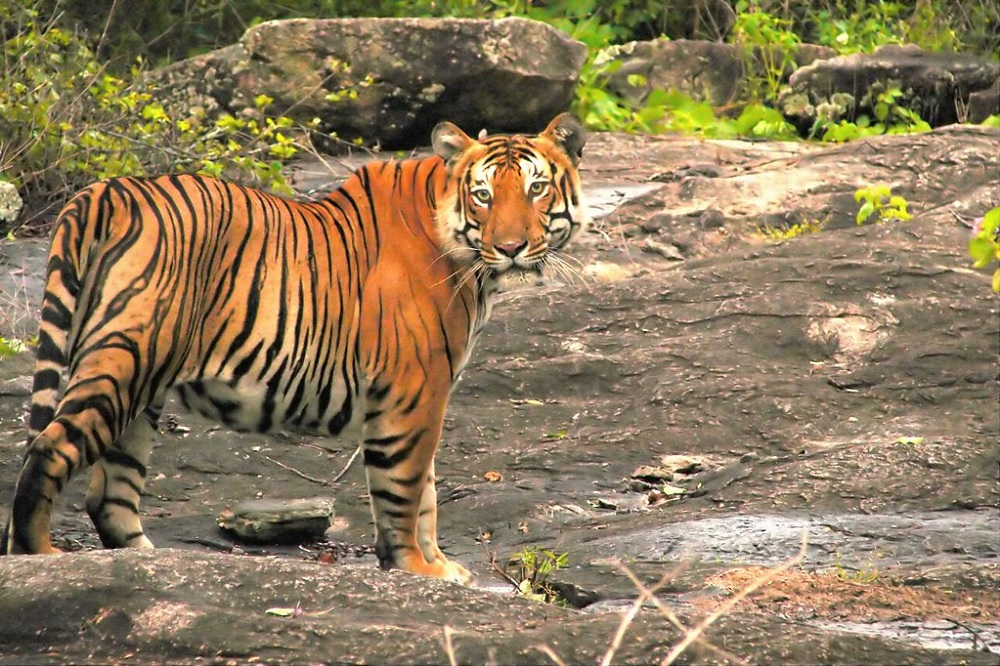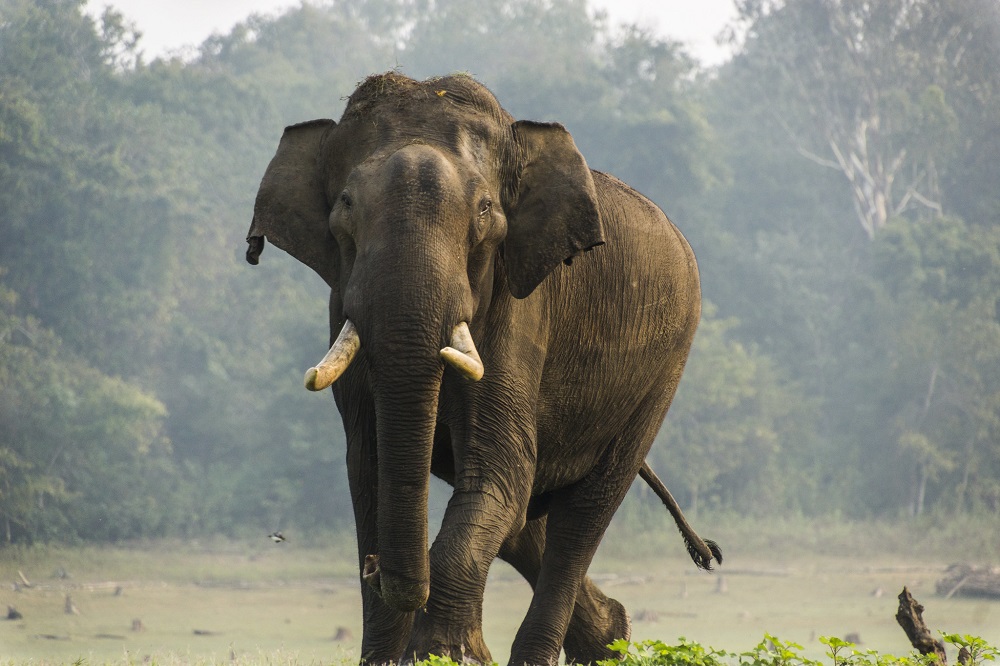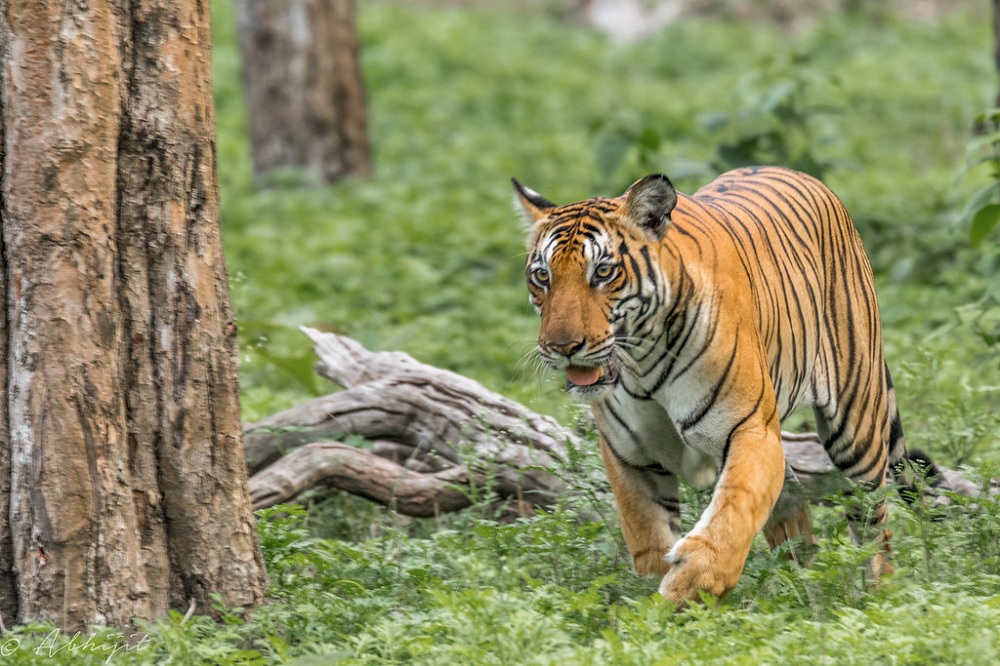Periyar National Park
Periyar National Park and wildlife sanctuary is located in Thekkady, Kerala. It is very famous among tourists as elephant and tiger reserve. The park covers 357 square miles of land. Two main river, Pamba and Periyar runs through the park which helps the flora and fauna to thrive in this region.
This park is commonly called as the Periyar national park. It attracts thousands of tourists every year for safari, rafting and other activities. The park lies in the middle of cardamom hills. The north and the east borders of the park are covered by the mountains. The west part of the park is bordered by a plateau. From the plateau, the land steeps down to the valley of Pamba. The highest peak in this park is Kottamalai, which stands at 2,019m. This rich biodiverse land was formed from the rivers. The park also includes a reservoir, which provides year-around water for the wildlife.
Different Areas in the Park
Mangala Devi temple: This is an ancient temple located inside the national park. People are allowed to enter this temple only once in a year during a Hindu festival.
Pullumedu: It is an important spot for pilgrims. This grassland overlooks the auspicious Lord Iyyappan temple of Sabari Mala. During January, many people visit Pullumedu to spot a glittering light in the sky, which is considered as the deity in spiritual form
Periyar Lake: This is a large lake, which is famous for river rafting. It is one of the famous attractions in the park. The bamboo rafting starts by 8 am. A tour stretches for three hours and tourists have to hitchhike at certain areas to spot animals. An armed guard and numerous guides would accompany during rafting. Boat cruise and boat rides are common in this lake. Birdwatching is common in this area.
Hill region: The north and the east borders of the park are covered by mountains. These mountains form a great trekking train. Prior permissions have to be obtained to take up trekking. Hiring a guide is mandatory in this region. Kurisamala to Kumily and, Kumily to Pandikuzhi are some of the famous routes.
Cardamom hills: This is one of the most exotic spots in the park. As the name indicates, it is a hill with cardamom plantation. Guided trips through the hills are available via jeep. Tourists usually take up a trip to this hill from outside the park.
Forest regions: The thick forest regions inside the park are filled with thick tropical evergreen trees, which make sunrays hard to penetrate. These trees make a canopy and creates a great area for forest trekking. Grasses and small shrubs are hard to spot in this region due to lack of sunlight.
Flora of Periyar National Park
The park is covered with moist deciduous forest, tropical evergreen forest and eucalyptus groves. There are more than 171 species of grasses in the park. 140 species of orchids can be found here. Elephant grass covers most of the grasslands in this park. Top flora to spot in this part are teak, mangoes, rosewood, jamun, jacarandas, terminalias, tamarind, royal ponciana, bamboos, Indian conifer, plumerias, sacred fig, sandalwood, medicinal gloriosa lily and others. Many medicinal plants are found in this region. The park also covers agricultural regions, which includes coffee, cardamom and tea plantations.
Fauna of Periyar National Park
There are 35 major mammals in this park. This includes many threatened species like elephants and tigers about 24 Bengal tigers are found here. Top mammals to spot here are white tiger, Indian elephants, flying squirrel, wild pig, sambar, gaur, fruit bat, Nilgiri marten, Nilgiri langur, sloth bear, jungle cat and others. More than 266 species of birds can be spotted in this park. This includes numerous migration birds too. Top birds to spot in the park are Malabar grey hornbill, white bellied blue flycatcher, sunbird, great hornbill, Sri Lanka frogmouth, black necked stork, oriental darter, brahminy kite, little spiderhunter, eagle owl, Nilgiri wood pigeon and others. New bird species like steppe gull, paddyfield warbler, grey-necked bunting and others are recently spotted in this park.
45 species of reptiles are found in the park. This includes turtles, lizards and snakes. Top reptiles to spot are striped coral snake, Malabar pit viper, king cobra and others. Top amphibians to spot in the park are Malabar gliding frog, bicolored frog, Asian toad and others. In the lakes and rivers found in the park, about 40 species of fishes are found. Top fishes are Priyar barb, Periyar trout, channa barb, Travancore loach and others.
More than 160 butterfly species are found here. This includes the largest butterfly of South India, Southern birdwing. Other top butterflies to spot are Malabar tree nymph, lime butterfly and Travancore evening brown. Numerous species of moths are also found here.
Climate of Periyar National Park
The temperature ranges from 15 degree C to 31 degree C. The highest temperature is found during Aril and May and the lowest is experienced in December. June to September is the monsoon season, which provides average rainfall. October to December also gets rainfall due to the northeast monsoon. Heavy to moderately mild rainfall can be experienced during this season.
Summer: The summer season starts in March and ends in May. Though it is easy to spot animals that come to quench the thirst near the lake, the climate will be hot and dehydrating. Evening safari tours are common during summer. The temperature can go as high as 36 degree C and the vegetation would be lean.
Monsoon: Monsoon season is the worst time to visit the park. Water activities might be stopped due to heavy rains. The animals would be hard to spot and many interesting safaris to many regions inside the park would be restricted.
Winter: October to March is the winter season in Thekkady. The water bodies will be rich with water. The vegetation will be lush with recent rains. The temperature will be mild and showers, if any will be very mild. Many flowering plants will be at bloom during this season. Animals can be spotted with their small ones and, many migration birds are easy to spot. Rafting and boat cruise would be more interesting due to recent rains.
Best Season to Visit Periyar National Park
December to March is the right time due to lack of rain and very mild temperature. The animals, migration birds and butterflies are easier to spot during this season. Photography tours are best when taken during this time.
Wildlife Safari in Periyar National Park
Safari is the best way to scale the national park. Top safaris available in the park are elephant safari, jeep safari and boat cruise on Periyar Lake. The boat cruise is the most opted one by all tourists. It is the best way to spot wild animals like elephants, wild boar and others. Spotting deers near the water body edges is very common. Boat cruise might not be available throughout the year. During heavy rains, the boating might be stopped temporarily.
Elephant safari is common among tourists with children. It is easier to cover trails that are harder to reach. Moreover, elephant safaris provide more interesting experience than jeep or others. Since tigers are afraid to attack elephants, it is a safer option for those who want to spot a few tigers.
Jeep safari is for small groups and for individuals. It suites people who love photography and to spot ferocious animals. Walking tour with guides are also available. The distance to be covers in very long and thus, it is not recommended for old people and children.
Wildlife Safari Timings
Boat cruise stretches for 30 minutes. Timings for boat cruise are 7:25 am, 9:15 am, 11:15 am, 1:30 pm and 4:00 pm.
There are two types of jeep safari. Full day safari starts by early morning and the last trip starts by three in the evening. The night safari starts by 11:00 pm and ends by 3:00 am.
Elephant safari stretches for 30 minutes. The tour starts by early morning 6:00am and the last trip starts by five in the evening.
How to Reach Periyar National Park
By air: Nearest international airports are located in Madurai and Kochi. Madurai airport is located 136 km from Thekkady and Kochi airport is located 190 km from Thekkadi. Madurai and Kochi are connected with all the important airports in the country and major destinations outside the country.
Buses are available from various states to Thekkady. Thekkady is connected with other states and cities via direct buses from Bangalore, Chennai, Salem, Trichy, Hosur, Viluppuram, Krishnagiri and others. Both private and government buses are available throughout the year.
Nearest railway station is located in Kottayam which 114 km away from Thekkady. Trains that run to Trivandrum will halt at Kottayam. Trains connects almost all major cities with Trivandrum and runs all seven days a week. Cabs and buses can be hired from the railway station to reach Thekkady or the park. Private cabs can be hired from all major cities to reach Thekkady.
Distance between major cities and Periyar National Park
- Kumily to Periyar National Park – 4 km
- Kottayam to Periyar National Park – 100 km
- Madurai to Periyar National Park– 110 km
- Kochi to Periyar National Park – 120 km
Best Places to Stay in Thekkady
Inside Periyar National park, you will find forest guesthouse to stay. Prior booking is required for accommodation. Due to high demand getting accommodation during peak season is rare.
- Wild Corridor resort and spa, Kumily
- Kofiland, Kumily
- The mountain courtyard, Kumily
- Wildernest, Kumily
- Hills and Hues, Kumily
- Springdale Heritage, Kumily
- PoetreeSarovar Portico, Kumily
- Hotel treetop, Kumily
- Green ark resort, MunnaiKumily highway
- Elephant Route resort, Thekkady junction
- Hotel Tigers Roare, KumilyThekkady road
- Greenwoods resort, Kumily
- Periyar Woods, KumilyThekkady road
- Hotel Sandra palace, Thekkady junction
- Hotel Grand Thekkady, Kumily
Thekkady has three 5-star hotels, 15 4-star hotels, 23 3-star hotels and numerous budget hotels. There are hundreds of hotels in Murikkady, Kumily and other surrounding areas. There are a few government hotels and lodges inside the park too.
Conservation History of Bandipur National Park
In 12th century, the Mullaperiyar dam was built and this let to the formation of the Periyar lake reserve. This artificial lake helped the region to bloom into a rich land that attracted numerous species of animals. Maharaja of Travancore declared the area now under the name of Periyar national park as private game reserve. Maharaja Balarama Varma took this measure in 1934 to avoid encroachment of tea plantations in this area. It was named as Nellikkampatty game reserve. After the political integration of the country, this sanctuary was declared as a wildlife reserve area in 1950. In 1978, the park was declared as a tiger reserve and in 1982, it gained the recognition as a national park.
In 1991, the park was taken under Project Elephant. In 2007, 148 square kilometers were added to the park. In 2012, another 148 square kilometer area was added to the park. The tiger reserve and the park creates 1.9 lakhs INR per hectare annually.


